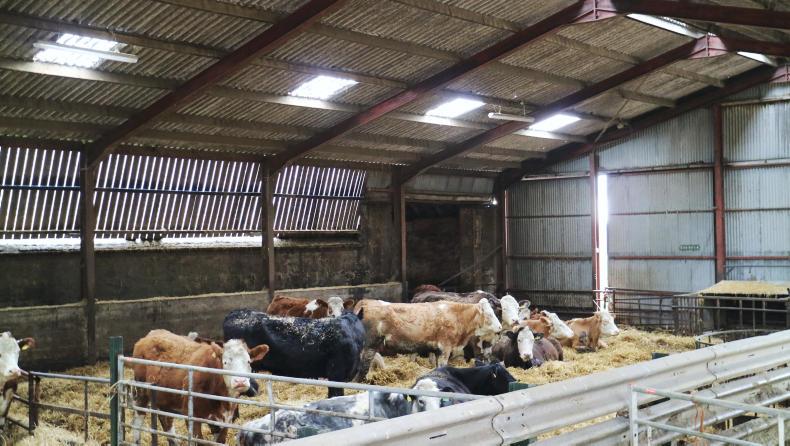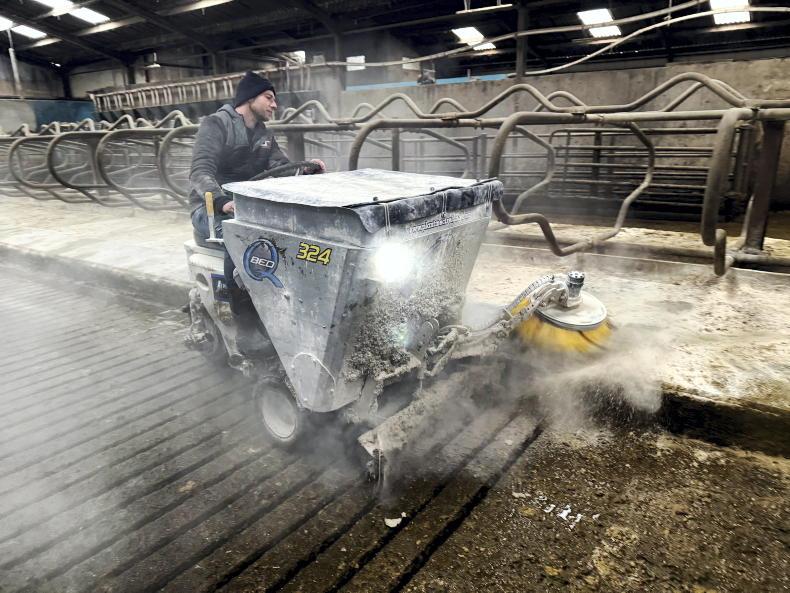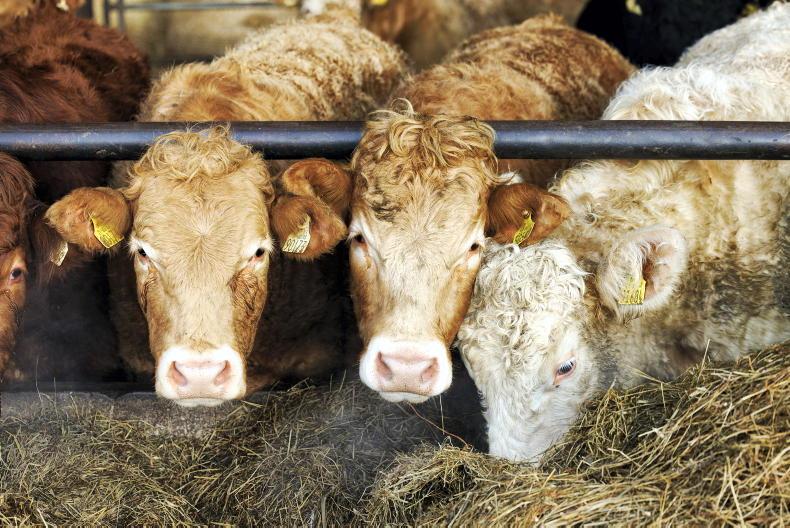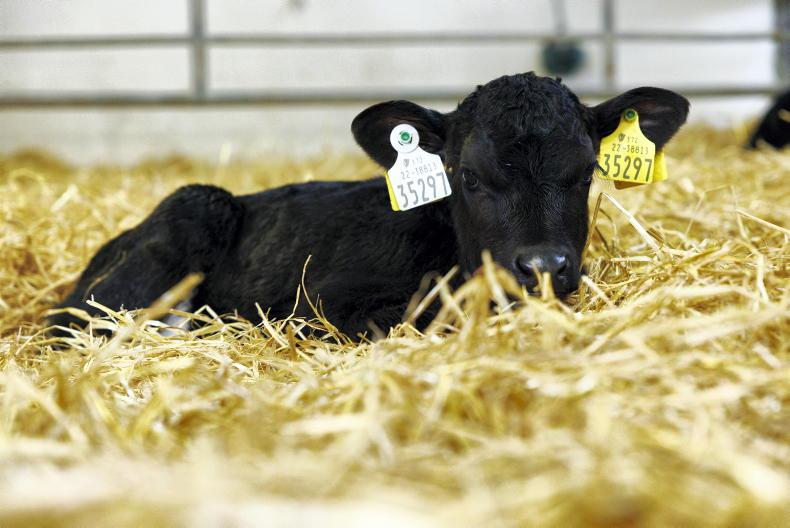Silage diets
Grass silage is first choice across much of Scotland as the base for winter rations. However, it is not a cheap feed to make, between fertiliser, machinery costs and the opportunity cost of the land used.
With a modest cost of seasonally rented grazing at £200/ha (£80/acre), fertiliser and true contract rates for all operations, the cost of a tonne of silage DM comes in around £105. An ad-lib silage diet for our dry cow would cost £1.47 per day.
Silage also runs the risk of being too good a feed, meaning dry cows gain condition over winter, leading to calving problems. For example, 14kg of dry matter silage at an analysis of 10ME would supply 140 megajoules of energy, an oversupply of 70%.
This means silage needs to be restricted to less than 10kg of dry matter per day, bringing daily cost to around 90p/cow. However, they will still need full bellies so will need straw alongside this, adding to the cost.
Straw diets
Many people see straw as an expensive way of feeding dry cows. However, when looking at the true costs of silage, straw is actually good value. However, as opposed to the silage, straw alone is not a good enough feed for dry cows, meaning it needs to be supplemented in order to maintain cows.
Wrapping and ammonia-treating straw costs around £30/t, meaning if straw can be sourced for £60/t, it costs the same as silage. However, due to the bulky nature of the straw, the cows are unable to eat as much, reducing the daily requirement to around 9kg of DM. This brings the cost per day in at 80p to 90p per cow.
The other option with straw is to feed energy and protein along with it to bring it up to the required nutritional standard. There are several options here, be that in liquid form as either pot ale, or a urea molasses feed or as concentrates.
Each have strengths and weaknesses but can certainly reduce the costs of wintering as the straw consumption drops to nearer 7kg and the liquid/concentrate makes up the remaining 2 – 3kg of dry matter. Combined, these come in at a cost of around 90p/cow/day.
Straw diets also have a couple of other advantages:
Low machinery running costs.Less bedding required as dung is drier.However, straw diets also need to be properly formulated to ensure that stock do not suffer rumen impaction.
Several farms in the project have made the move to straw-based diets for some of the dry cows, leading to a reduced daily cost and better cow condition come calving.
Brassica and root diets
Brassica and root diets are popular with those on the land type to suit them. With cows being heavier today than in the past, outwintering is more difficult on heavier ground. However, those on lighter, free-draining soils can use these diets to great effect.
Again, like the straw diets, machinery costs are low and bedding costs are eliminated, leading to a significant reduction in the cost of keeping cows. However, it is not all plain sailing and there are several considerations that should be made.
Stock need a runback to a clean dry lying area.Brassicas cannot make up more than 70% of the dry matter intake. Long fibre is required.Correct mineral supplementation is required to balance the diet.Several of the farms in the project have found great success with outwintering cows on either brassicas or roots.
Both the straw and brassica diets will also need supplemented as cows approach calving. Around six weeks from calving, better-quality feed should be introduced to ensure the cow is in good nutritional status for calving and is ready to produce quality colostrum for her calf.
Silage diets
Grass silage is first choice across much of Scotland as the base for winter rations. However, it is not a cheap feed to make, between fertiliser, machinery costs and the opportunity cost of the land used.
With a modest cost of seasonally rented grazing at £200/ha (£80/acre), fertiliser and true contract rates for all operations, the cost of a tonne of silage DM comes in around £105. An ad-lib silage diet for our dry cow would cost £1.47 per day.
Silage also runs the risk of being too good a feed, meaning dry cows gain condition over winter, leading to calving problems. For example, 14kg of dry matter silage at an analysis of 10ME would supply 140 megajoules of energy, an oversupply of 70%.
This means silage needs to be restricted to less than 10kg of dry matter per day, bringing daily cost to around 90p/cow. However, they will still need full bellies so will need straw alongside this, adding to the cost.
Straw diets
Many people see straw as an expensive way of feeding dry cows. However, when looking at the true costs of silage, straw is actually good value. However, as opposed to the silage, straw alone is not a good enough feed for dry cows, meaning it needs to be supplemented in order to maintain cows.
Wrapping and ammonia-treating straw costs around £30/t, meaning if straw can be sourced for £60/t, it costs the same as silage. However, due to the bulky nature of the straw, the cows are unable to eat as much, reducing the daily requirement to around 9kg of DM. This brings the cost per day in at 80p to 90p per cow.
The other option with straw is to feed energy and protein along with it to bring it up to the required nutritional standard. There are several options here, be that in liquid form as either pot ale, or a urea molasses feed or as concentrates.
Each have strengths and weaknesses but can certainly reduce the costs of wintering as the straw consumption drops to nearer 7kg and the liquid/concentrate makes up the remaining 2 – 3kg of dry matter. Combined, these come in at a cost of around 90p/cow/day.
Straw diets also have a couple of other advantages:
Low machinery running costs.Less bedding required as dung is drier.However, straw diets also need to be properly formulated to ensure that stock do not suffer rumen impaction.
Several farms in the project have made the move to straw-based diets for some of the dry cows, leading to a reduced daily cost and better cow condition come calving.
Brassica and root diets
Brassica and root diets are popular with those on the land type to suit them. With cows being heavier today than in the past, outwintering is more difficult on heavier ground. However, those on lighter, free-draining soils can use these diets to great effect.
Again, like the straw diets, machinery costs are low and bedding costs are eliminated, leading to a significant reduction in the cost of keeping cows. However, it is not all plain sailing and there are several considerations that should be made.
Stock need a runback to a clean dry lying area.Brassicas cannot make up more than 70% of the dry matter intake. Long fibre is required.Correct mineral supplementation is required to balance the diet.Several of the farms in the project have found great success with outwintering cows on either brassicas or roots.
Both the straw and brassica diets will also need supplemented as cows approach calving. Around six weeks from calving, better-quality feed should be introduced to ensure the cow is in good nutritional status for calving and is ready to produce quality colostrum for her calf.









SHARING OPTIONS